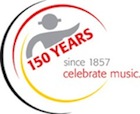Chords in 12 bar blues
Hello,
Your music theory material is quite solid and my chord understanding is moving ahead. I have one element of confusion. In the basic accompaniement exercies (I want you with me) when we simply play the 1, 4, 1, 5, 4, 1 progression for A harp cross posistion the I chord is E (3 blow). Where I got confused is when I go to Termperature. I see it also in the Key of E or A harp played cross harp. But in that case I see that the 1 chord is3 draw which is a g# on an A harp. Can you clear up the confusion. I realize that this understanding is fundemental to moving to Level 3 of the beginner series.
This is complex. Playing a sax was much easier...but I love the challenge and the sound of the blues harp.
Good on the I and IV, but the V Chord = 1, 2' (2 half step bend), 3" (3 draw whole step bend), (D F# A on a C Harmonica in 2nd, or B D# F# in an A Harmonica).
"Further Im understanding that the root could be played in the low, mid or upper register the same way." you got it... so I Chord 2 3 4, can be 6+ 7 8, etc. And the entire range is 1 2 3 4 6+ 7 8 9+
"And lastly any of the above single notes could be applied in the lick in addition to the complete chord." Correct
"I assume that anyone taking guitar (for example) would have to be proficient in these same issue." Yes, but not just in one key, but all 12 keys. For us, we just grab another key of harmonica to change keys... we don't actually change how we play.
Music theory is just another tool to help, it all leads to you being a proficient player.
You got it, well done!
As a beginner I realise how little I know about music theory. To be able to develop I believe I must understand the"language" hence my question. I have been through the thoery material a number of time and am getting a handle on things, I think. But when look at this origial question I realise I am lost. Is it worth my while tring to understand this particular question or am I better off going back to your (David) theory lessons to understand the development of chords. Can you point me to the appropriate section.
Hello John. As your studies on the harmonica (actual playing the harmonica) develops through your studies, these theoretical terms will continue to make more sense to you, due to the fact that they'll become less theoretical (things you will use someday) and turn into more practical (actual ideas you're skilled enough on the harmonica to use).
If you haven't already done so, start working with the Accompaniment Study series, it's the most practical use of music theory for the harmonica player and the first three lessons are beginner-friendly. You'll also deepen your practical theory knowledge in the Improvising Studies down the road.
P.S., music theory takes time to sink in, it sure did for me, and I continue to refine my understanding of the most basic concepts all the time. Keep with it, it will come to you in small epiphanies.
David many thanks for the reply. Last nigh whilst ding some non playing study I started on Accompaniement Study and started to get the feel of things a bit better.
Fantastic


Glad to hear it. Reminder to think as if you're playing on a C harmonica at all times, it makes the amount of memorization that you need to do way less.
To answer your question about the A harmonica in the Key of E... the I Chord is E G# B (Root, 3rd and 5th), so G# is a valid note, it's the 3rd of the chord.